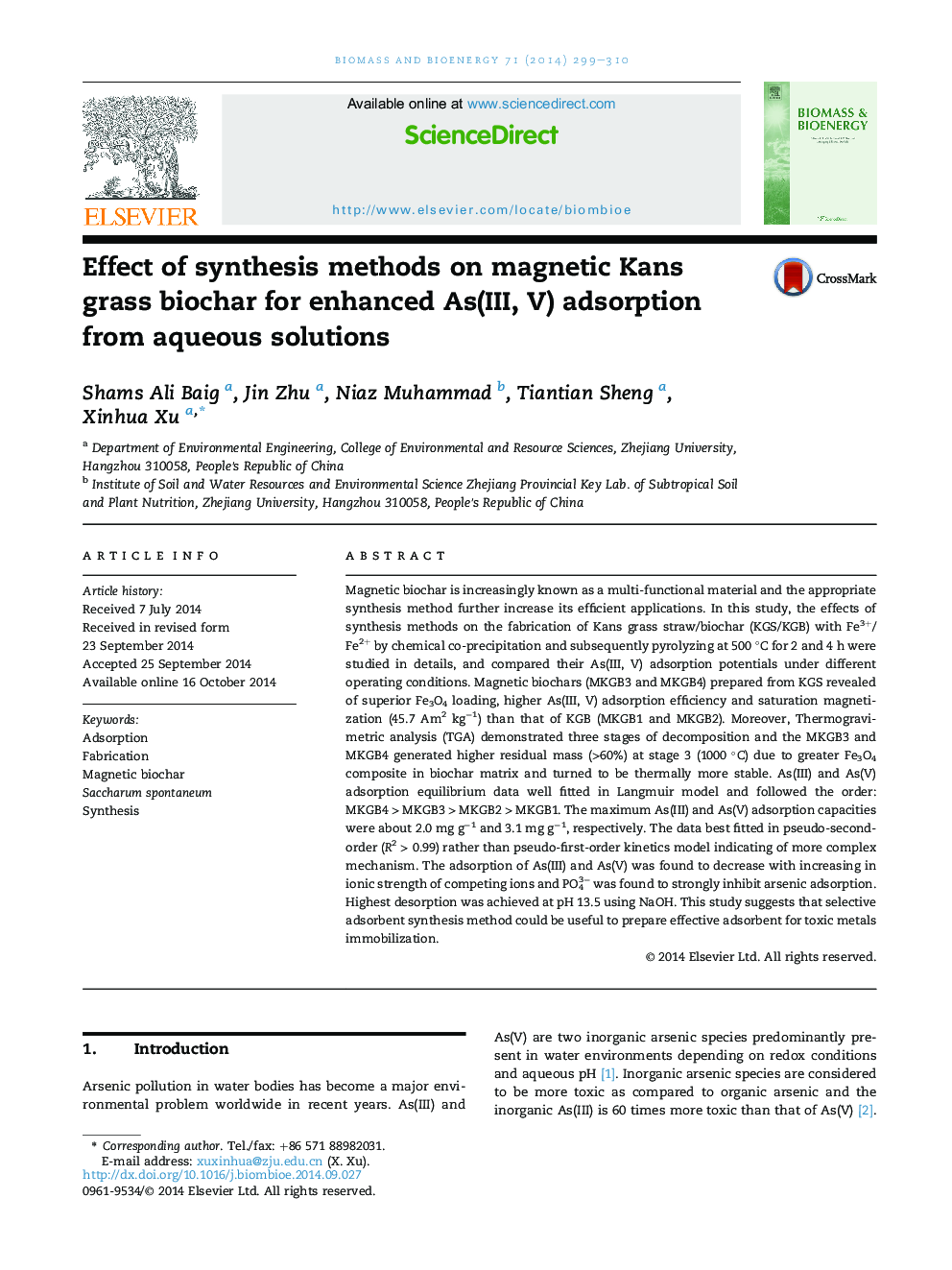| Article ID | Journal | Published Year | Pages | File Type |
|---|---|---|---|---|
| 676828 | Biomass and Bioenergy | 2014 | 12 Pages |
•The effect of synthesis methods on magnetic biochars performance was reported.•The single step method demonstrated higher Fe3O4 content, thermal stability and ferromagnetic properties in magnetic biochars.•Significant As(III) (2.004 mg g−1) and As(V) (3.132 mg g−1) adsorption efficiencies were achieved.•Maximum As(III, V) desorption was achieved at pH 13.5 using NaOH solution.•Magnetic biochar synthesis method is simple, cost-effective and can be optimized.
Magnetic biochar is increasingly known as a multi-functional material and the appropriate synthesis method further increase its efficient applications. In this study, the effects of synthesis methods on the fabrication of Kans grass straw/biochar (KGS/KGB) with Fe3+/Fe2+ by chemical co-precipitation and subsequently pyrolyzing at 500 °C for 2 and 4 h were studied in details, and compared their As(III, V) adsorption potentials under different operating conditions. Magnetic biochars (MKGB3 and MKGB4) prepared from KGS revealed of superior Fe3O4 loading, higher As(III, V) adsorption efficiency and saturation magnetization (45.7 Am2 kg−1) than that of KGB (MKGB1 and MKGB2). Moreover, Thermogravimetric analysis (TGA) demonstrated three stages of decomposition and the MKGB3 and MKGB4 generated higher residual mass (>60%) at stage 3 (1000 °C) due to greater Fe3O4 composite in biochar matrix and turned to be thermally more stable. As(III) and As(V) adsorption equilibrium data well fitted in Langmuir model and followed the order: MKGB4 > MKGB3 > MKGB2 > MKGB1. The maximum As(III) and As(V) adsorption capacities were about 2.0 mg g−1 and 3.1 mg g−1, respectively. The data best fitted in pseudo-second-order (R2 > 0.99) rather than pseudo-first-order kinetics model indicating of more complex mechanism. The adsorption of As(III) and As(V) was found to decrease with increasing in ionic strength of competing ions and PO43− was found to strongly inhibit arsenic adsorption. Highest desorption was achieved at pH 13.5 using NaOH. This study suggests that selective adsorbent synthesis method could be useful to prepare effective adsorbent for toxic metals immobilization.
Graphical abstractFigure optionsDownload full-size imageDownload as PowerPoint slide
